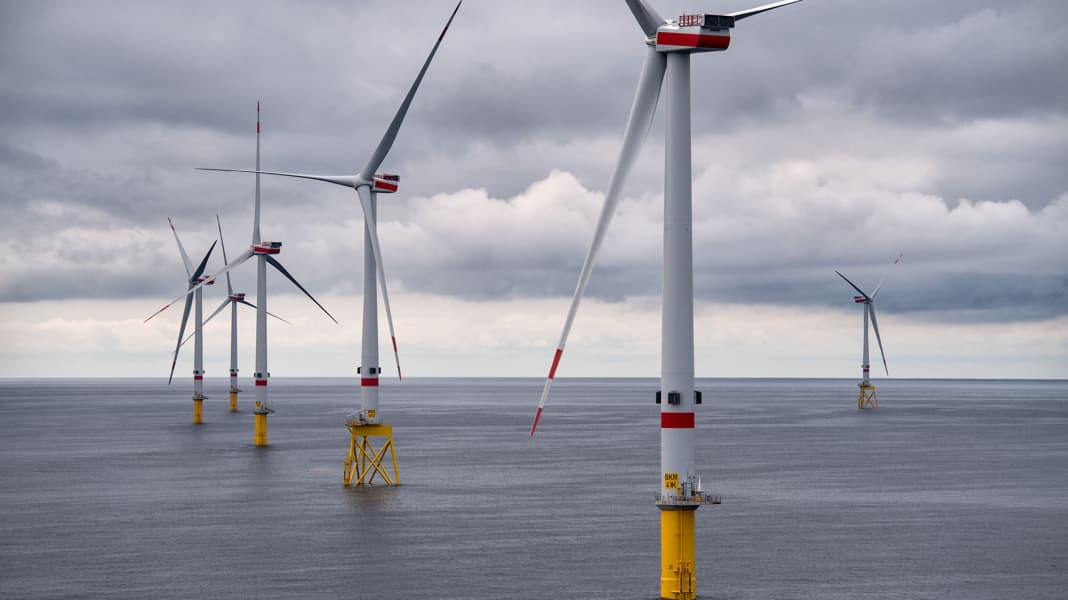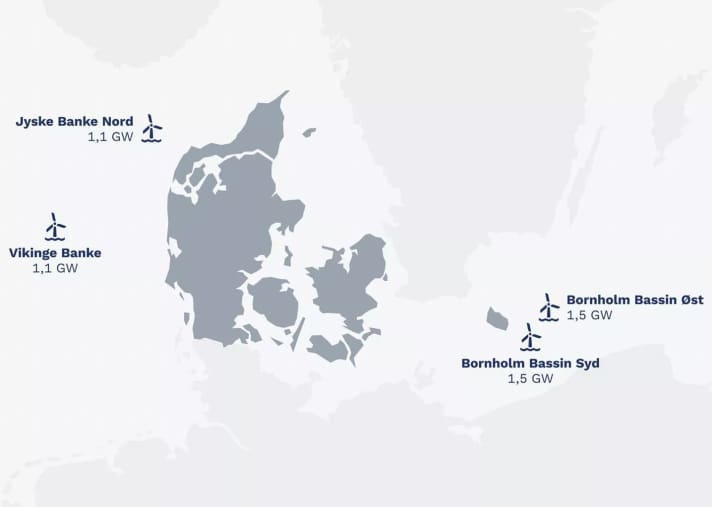
Ørsted, the global market leader in offshore wind energy, and Copenhagen Infrastructure Partners (CIP) have entered into a partnership to develop around 5.2 gigawatts of offshore wind capacity in Denmark as part of four projects. With the government's offshore wind tenders, Denmark could already achieve its 2030 target of reducing emissions by 70 per cent. This should lead to greater energy independence and a greater reduction in CO₂ emissions.
The planned projects are Vikinge Banke (1.1 GW) and Jyske Banke Nord (1.1 GW) in the North Sea as well as Bornholm Bassin Syd (1.5 GW) and Bornholm Bassin Øst (1.5 GW) in the Baltic Sea. Taken together, these would more than double Denmark's current offshore wind capacity. The offshore wind farms will be built at no cost to the Danish taxpayer and at the same time contribute significantly to growth and job creation at home.

Danger for sailors?
In Denmark, wind farms may generally be travelled through. Only in older farms, where the distances between the wind turbines are closer than in newer farms, is anchoring explicitly prohibited. In newer farms, anchoring is only prohibited in specially designated exclusion zones to protect submarine cables.
The general rule is to obtain up-to-date information from the maritime authorities of the respective countries before setting off. In Germany, this is the BSH's "Nachrichten für Seefahrer". Listen to the local radio while underway. And: The navigation rules only apply to installations that are already in operation. Where new parks are being built, there are always exclusion zones that must be avoided.
Many European countries are focussing on the massive expansion of offshore wind farms, and not just in the face of impending energy shortages. Germany has also been looking to expand its capacities for some time now. The much stricter rules on navigation are particularly important here. Read on to find out what North Sea and Baltic Sea sailors will have to prepare for in the not-too-distant future and where the potential dangers lie:
Denmark wants to become a pioneer in the offshore wind energy segment
Similar to Germany, Denmark does not currently have nearly as many plants in operation as the UK and the Netherlands. However, the plans envisage all the more capacity for the future. Rasmus Errboe from offshore wind energy company Ørsted is already convinced: "Denmark is a pioneer in the offshore wind industry and is at the forefront of the green transition."
The partnership between the two environmentally committed companies is subject to regulatory approval, which is expected by the end of 2022. It covers the development, construction and operation of the offshore wind farms and the associated transmission facilities. Copenhagen Infrastructure Partners (CIP) is one of the world's largest specialised fund managers for sustainable investments in the development of renewable energy infrastructure.
"It is obviously a good idea for Denmark's most experienced offshore wind power developers to join forces to ensure that the largest offshore wind power development in Danish history is carried out as efficiently as possible and with due respect for the environment and biodiversity in Danish waters," says Torsten Lodberg Smed from CIP about the collaboration.
Realisation still uncertain
Six applications for feasibility studies have been submitted for the construction of a total of twelve new offshore wind farms in Danish waters. As these are only applications for feasibility studies, it is by no means certain that the two new offshore wind farms will materialise.
The Danish Energy Agency writes: "This does not mean that authorisation will be granted for the construction of offshore wind turbines at the site in question, but only that the studies required for the project can be carried out."
Whether the ambitious plans will actually be realised depends on a number of factors. Among other things, possible effects on the environment, nature, safety, shipping and fishing as well as considerations regarding other Danish plans for offshore wind farms are being analysed.

